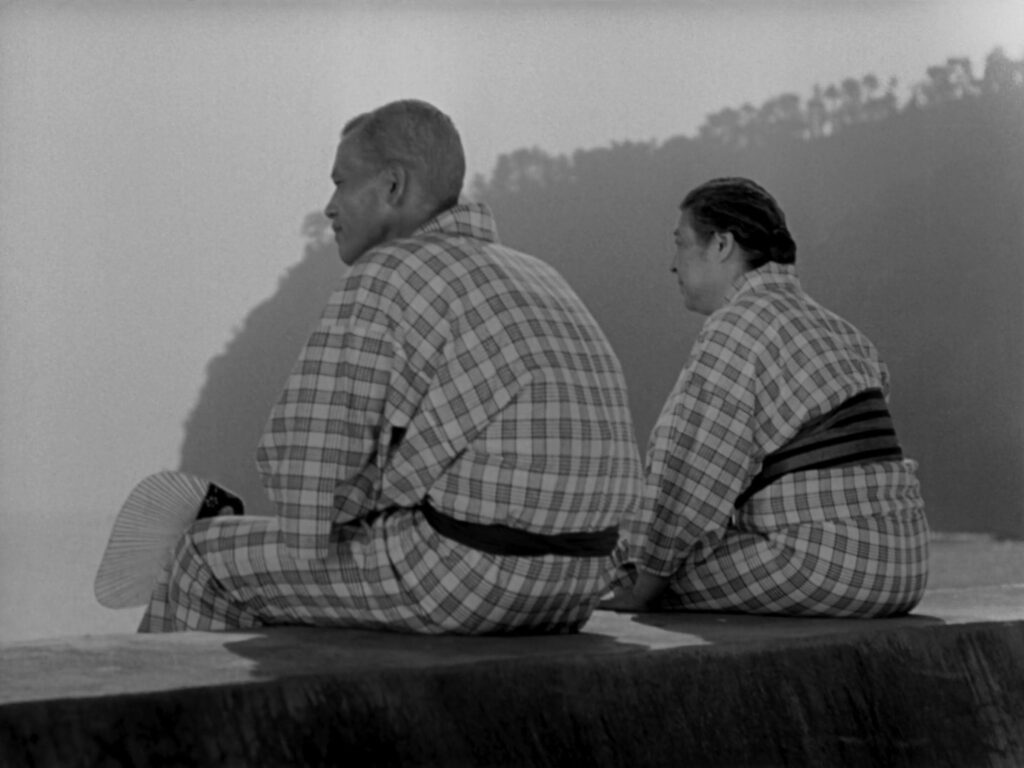
Tokyo Story
1953, directed by Yasujiro Ozu
The title of Tokyo Story is doubly ironic, first of all because the movie portrays Tokyo so generically that it could be almost any Japanese city. During the sightseeing tour the camera stays mainly on the passengers as they look out from the bus, and when Noriko takes her in-laws up the observation tower we see them from behind, catching only a glimpse in the direction of the National Diet. We barely see more of the Imperial Palace than a wall and some trees. With three shots of its castle on the return trip, Osaka gets about as much recognizable coverage as Tokyo gets in the whole movie. In fact both halves of the title are ironic: not only “Tokyo” but also “Story”. Let’s summarize what happens:
An old married couple travels from Onomichi, in Hiroshima Prefecture, to Tokyo to visit their children and grandchildren. Because their children’s lives are so busy, they go from one house to another and travel to Atami to enjoy the baths. They take the train home early to avoid imposing on their children. The old woman gets sick on the way, and their youngest son Keizo meets them in Osaka. Her condition worsens, the children rush to Onomichi to be with her, and she dies at home. Finally her two eldest children return to Tokyo right after the funeral supper, Keizo returns to Osaka, and Noriko moves on with her life.
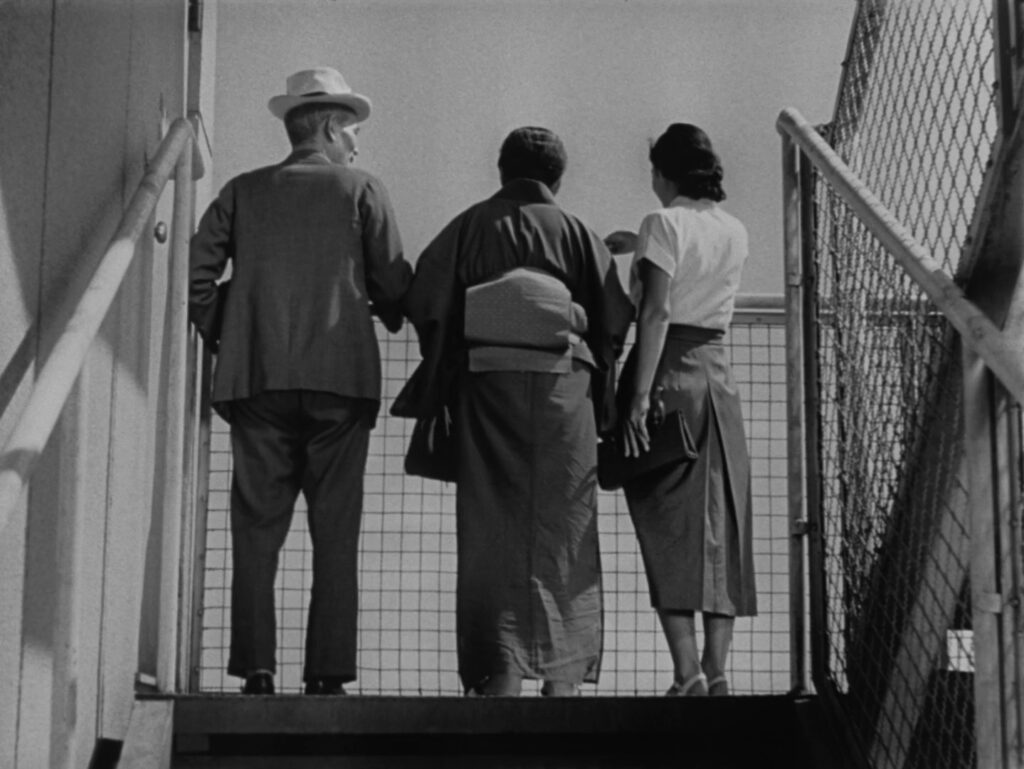
How can this be an accurate summary when none of the events just listed actually happens in the movie? At least none of them are shown on screen; they all happen between scenes. We never see Tomi and Shukichi’s journey to Tokyo; the movie cuts from one city to the other, and the old couple just shows up. We never see them go from one place to another within Tokyo or to the spa at Atami. Their children may be busy, but we see them attending to work for barely two minutes of screen time. We hardly see Tomi getting sick, only a brief dizzy spell by the seaside, and we certainly don’t see her die.
What we see instead are the “in-between” moments, the ordinary conversations and everyday actions that characterize the family and its interrelationships. Most of the major events are bridged over by Ozu’s “pillow shots”, as critic Noël Burch called the director’s transitional shots of landscapes, rooftops, lanterns, chimneys, trains, laundry drying, children walking, and other supposedly non-narrative content. Yet even without showing a single dramatic event, Tokyo Story leaves a vivid impression of momentous things happening to the Hirayama family. Nothing is lost for being unseen, but much is gained – the disappointments of the parents’ lukewarm welcome in Tokyo, the sense of loss at Tomi’s death, and the lessons drawn from these events are rendered more powerfully than if the movie had presented each event visually.
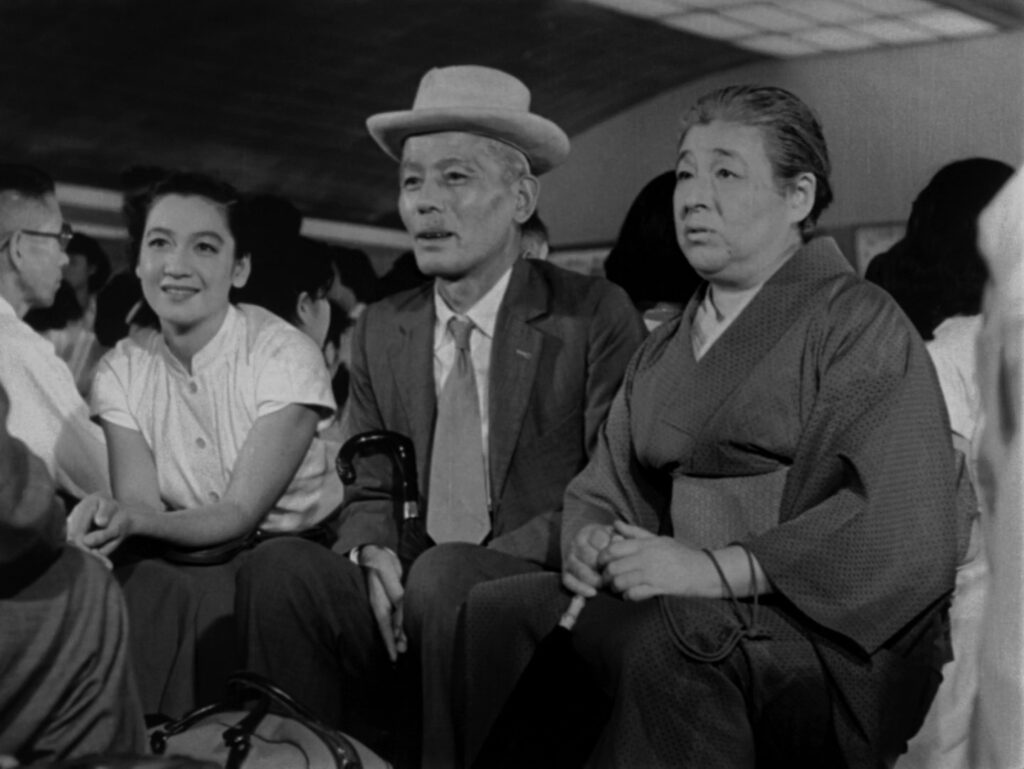
Tokyo Story represents a cinematic discovery, the fullest sign of awareness, at least probably before 1960, of a narrative principle that defines movies. Since the silent era everyone was fairly well aware that cinema’s narrative advantage lay in “showing” over “telling”. The best silent directors tried to minimize intertitles, knowing a movie worked better when it conveyed a story through visuals rather than words. Showing is intuitively preferable because it creates a more vivid experience than telling. The problem is that even though pictures are more lifelike than words, they too become trapped in “telling” when their only purpose is to impart information. In this sense written literature still holds the advantage because, in imparting less information, it invites the reader to participate in constructing the scenery, the characters, and the story – and the reader’s fuller investment makes the narrative more vivid than a picture book or a moving picture. Cinema, therefore, must also find ways to elicit audience investment. Eliding all of its dramatic events is one way that Tokyo Story elevates its narrative above mere “telling”.
All those pillow shots are a particularly instructive instance of showing. Ozu began his career in the silent era, and his pillow shots fill the customary role of intertitles in a silent movie, as if to say: “Back in Koichi’s neighborhood…”, “The next morning…”, or “Meanwhile in Osaka…”. Some, however, are more than simple bridge passages, like the five opening pillow shots that lead up to Tomi and Shukichi’s house:
1. A boat passes through Onomichi’s strait behind a traditional stone lantern;
2. Some children walk up a street on their way to school;
3. A train passes between rooftops with hills rising behind;
4. The same train, presumably, is viewed from uphill facing down toward the water;
5. The Hirayama house and garden appears on a small cliffside.
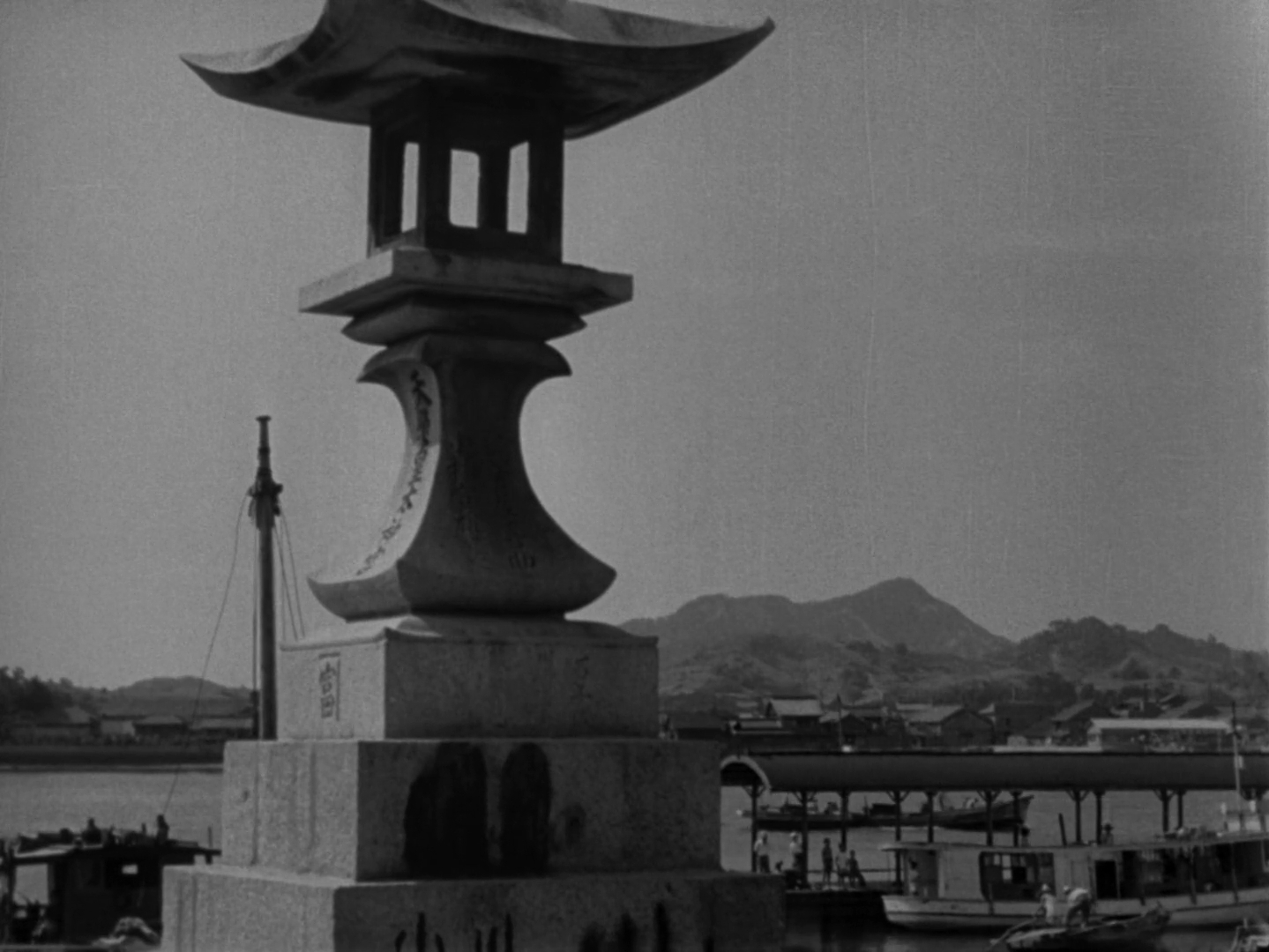
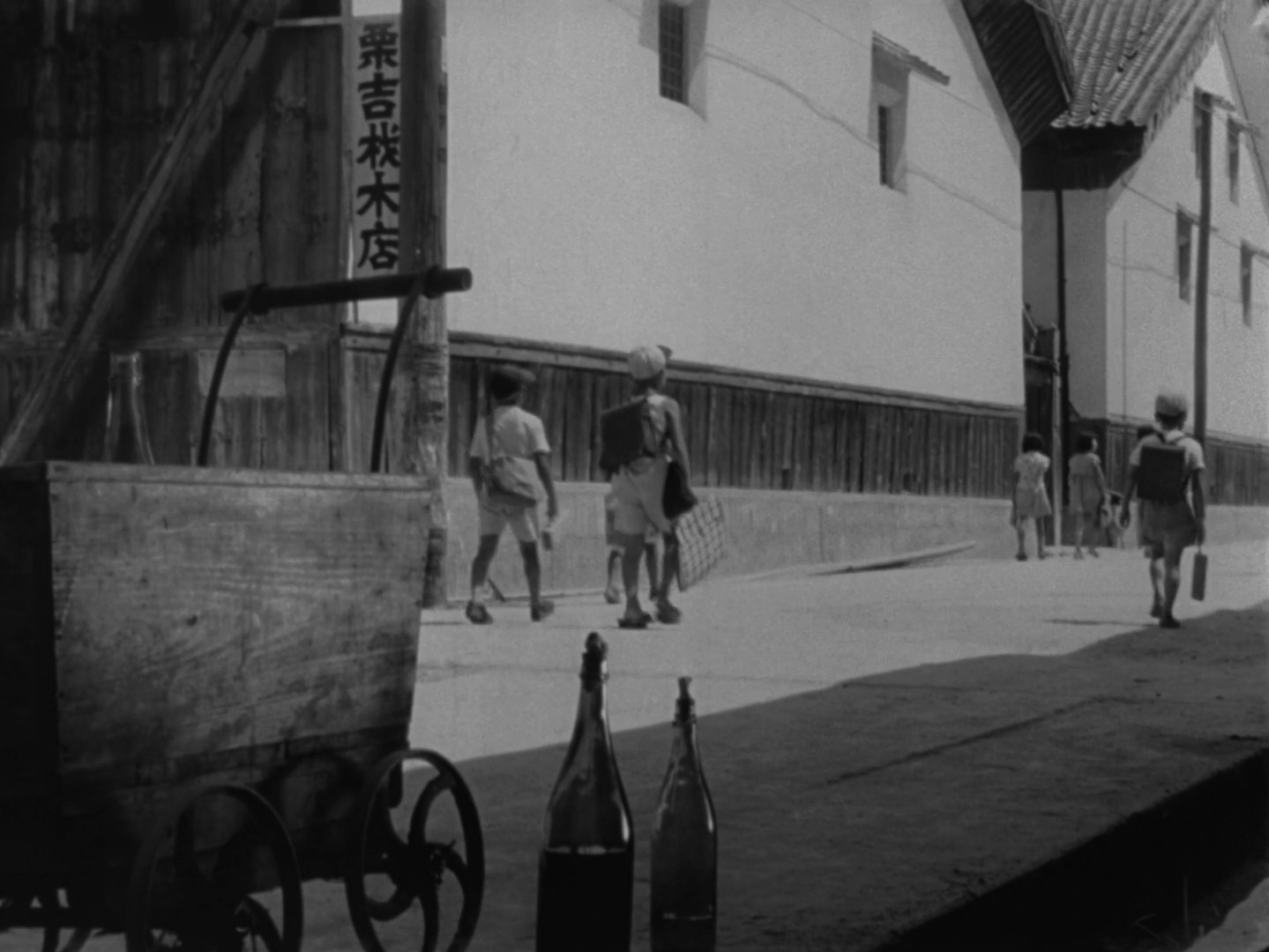
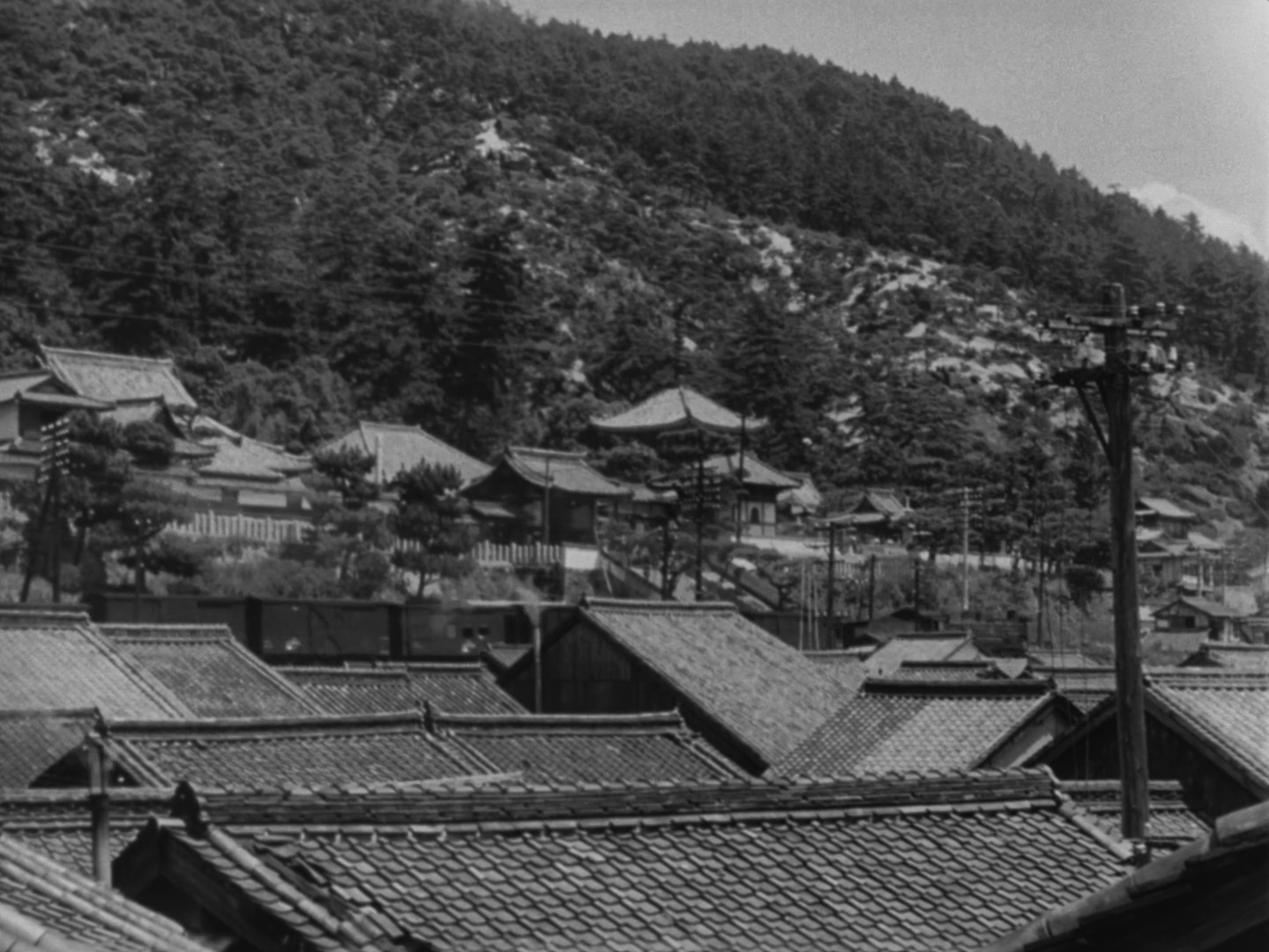
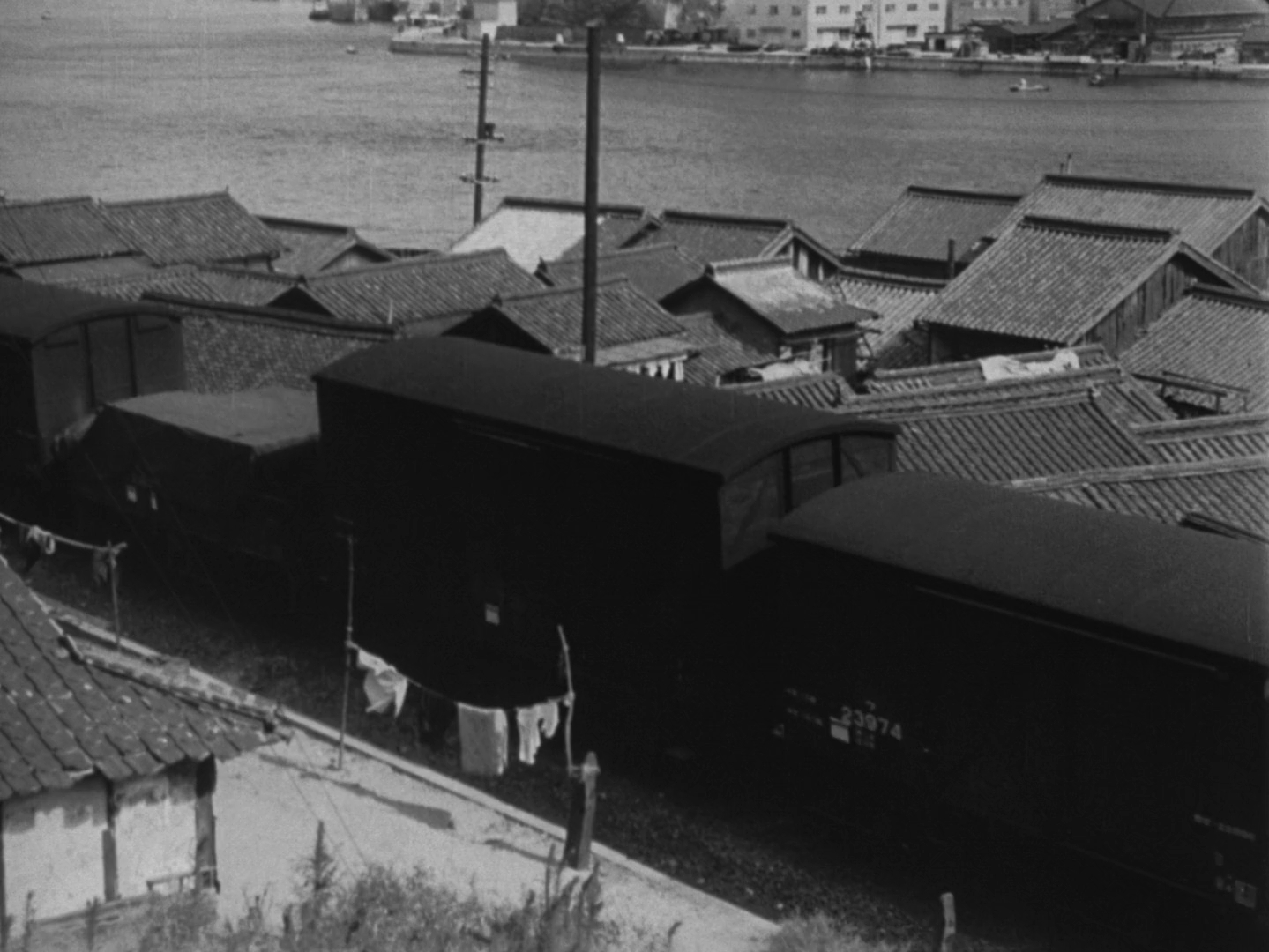
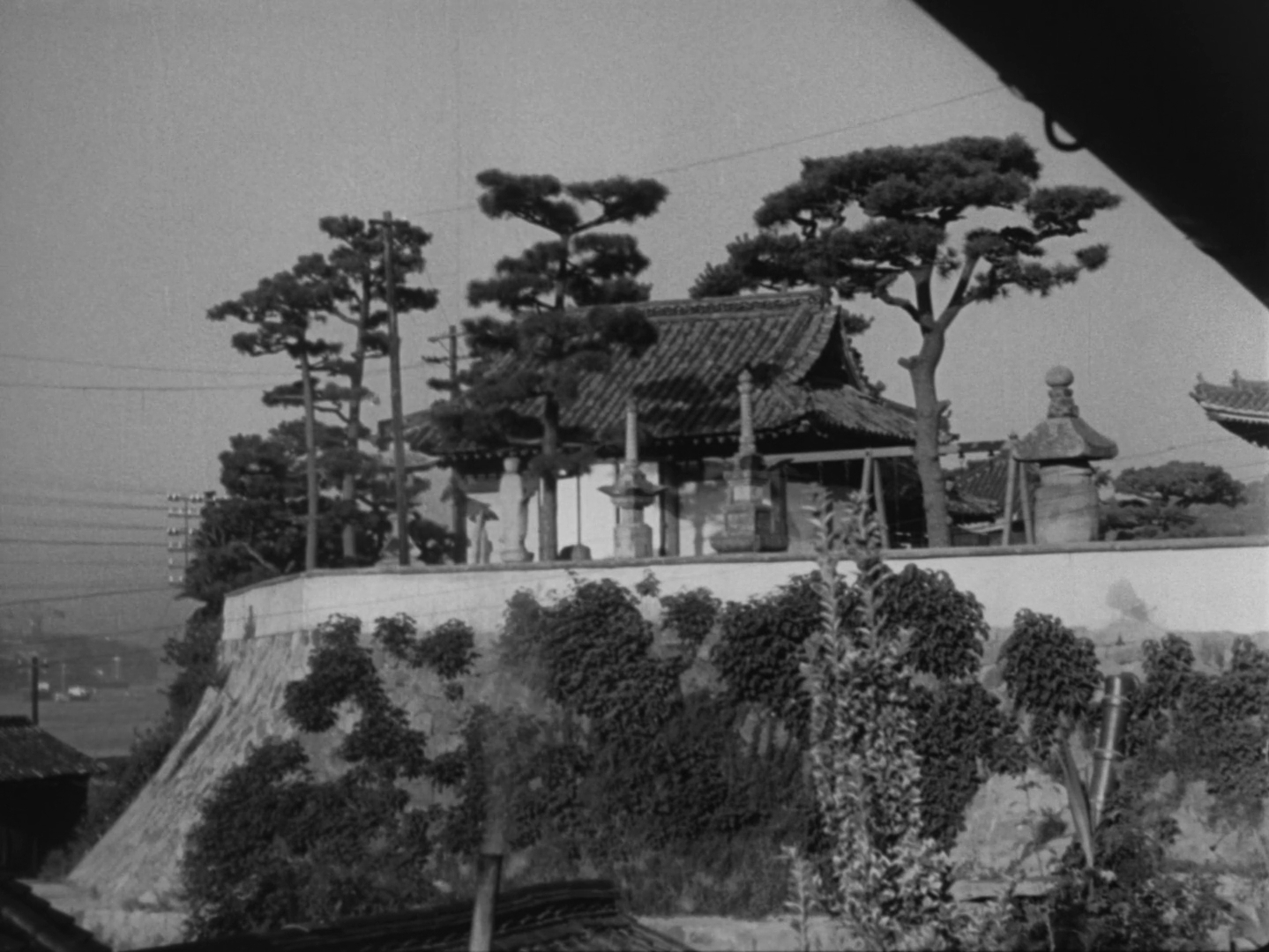
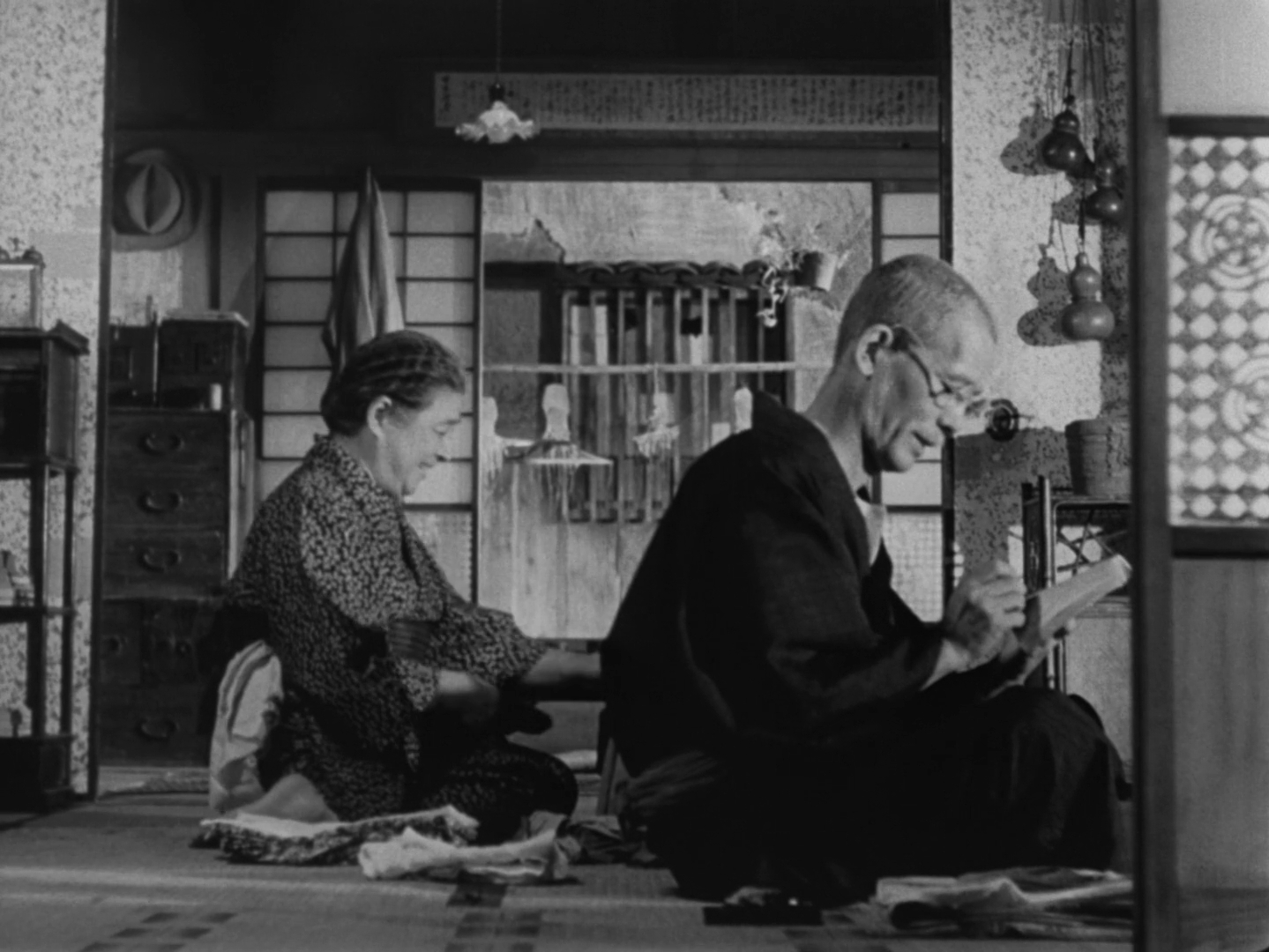
Although we’re never told anything about these five views or their relationships to each other, it’s plain that they rise progressively from sea level to the house; and moreover, because the camera direction keeps changing, they add a rotation to the ascent. In a movie with hardly any camera movement we nevertheless get an elegant rising corkscrew motion through a brief tour of Onomichi that puts the old couple’s home in context. More importantly, we’re simultaneously introduced to three visions of time that will figure large in Tokyo Story. The old lantern, the ocean, and the boats plying the water all evoke the eternal – the unchanging aspect of time. The schoolchildren represent successive generations – the cyclical aspect of time. And the trains, which move forward on a precise schedule, represent clock time – the linear aspect of time. Throughout Tokyo Story, and throughout Ozu’s films, the ocean will usually be associated with eternity and trains with linear time. In fact the first line of dialogue, a few seconds later, will link trains to clock time: “We’ll pass Osaka at about 6:00 tonight.”
Almost two hours later a similar sequence of pillow shots bridges the moment of Tomi’s death. There’s a boat passing, as there always will be, but there are no children on the street and no train on the tracks. The emptiness underscores the emptiness Tomi is leaving behind her, but beyond this fact of emptiness we’re not told what to feel about her death. Through a long funeral scene we witness a few moments of restrained grieving, but despite its reputedly devastating emotional power Tokyo Story does not go out of its way to force any reaction. If we compare it to its plot inspiration, the 1937 Leo McCarey movie Make Way for Tomorrow, we can see how telling and showing differ. In the older movie a bank forces the elderly couple out of their home. The situation arouses pity even in summary, and the movie doesn’t have to work for its effect. It’s a form of tyranny, telling the audience how to feel instead of showing the full ambiguity of reality and letting people form their own reactions. By respecting the limits of moving pictures Ozu achieves so much more. He apparently understood that while you can photograph someone dying, it’s not possible to photograph death. When people witness something they fool themselves into believing they understand it better. There’s a risk in entrusting too much to the senses; people will tend to confuse vision with insight.
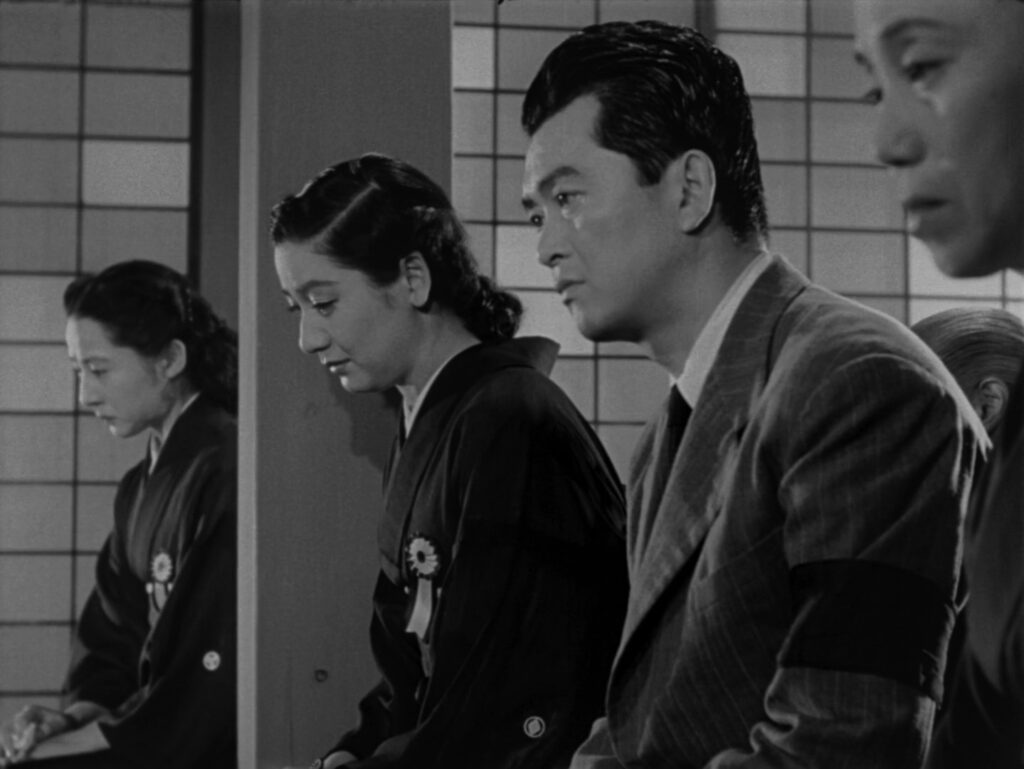
As affecting as Tomi’s death may be, its purpose is not merely to trigger our emotions. Rather it should help us to appreciate the wonder of living in the flow of time. Through her example and through the family’s thoughts and actions we can see how all three aspects of time define our lives. By dying she moves from the temporal into the eternal; she represents the older generation passing on; and premonitions of her death show the limits of linear time. Three of those premonitions occur when Tomi follows a male character along elevated ground, each occasion set to similar music:
1. During the early scenes at Koichi’s house she follows her grandson Isamu along a ridge and wonders whether she’ll be alive to see him grow up;
2. At Atami she has a dizzy spell as she starts to follow Shukichi along a seaside embankment;
3. By a high parapet in Ueno Park she wonders what it would be like if she and Shukichi got separated.
Continuing this pattern, in Osaka right after Tomi’s last words a male bicyclist passes along a ridge. Her absence from the frame prefigures the greater absence she’ll leave at her impending death.
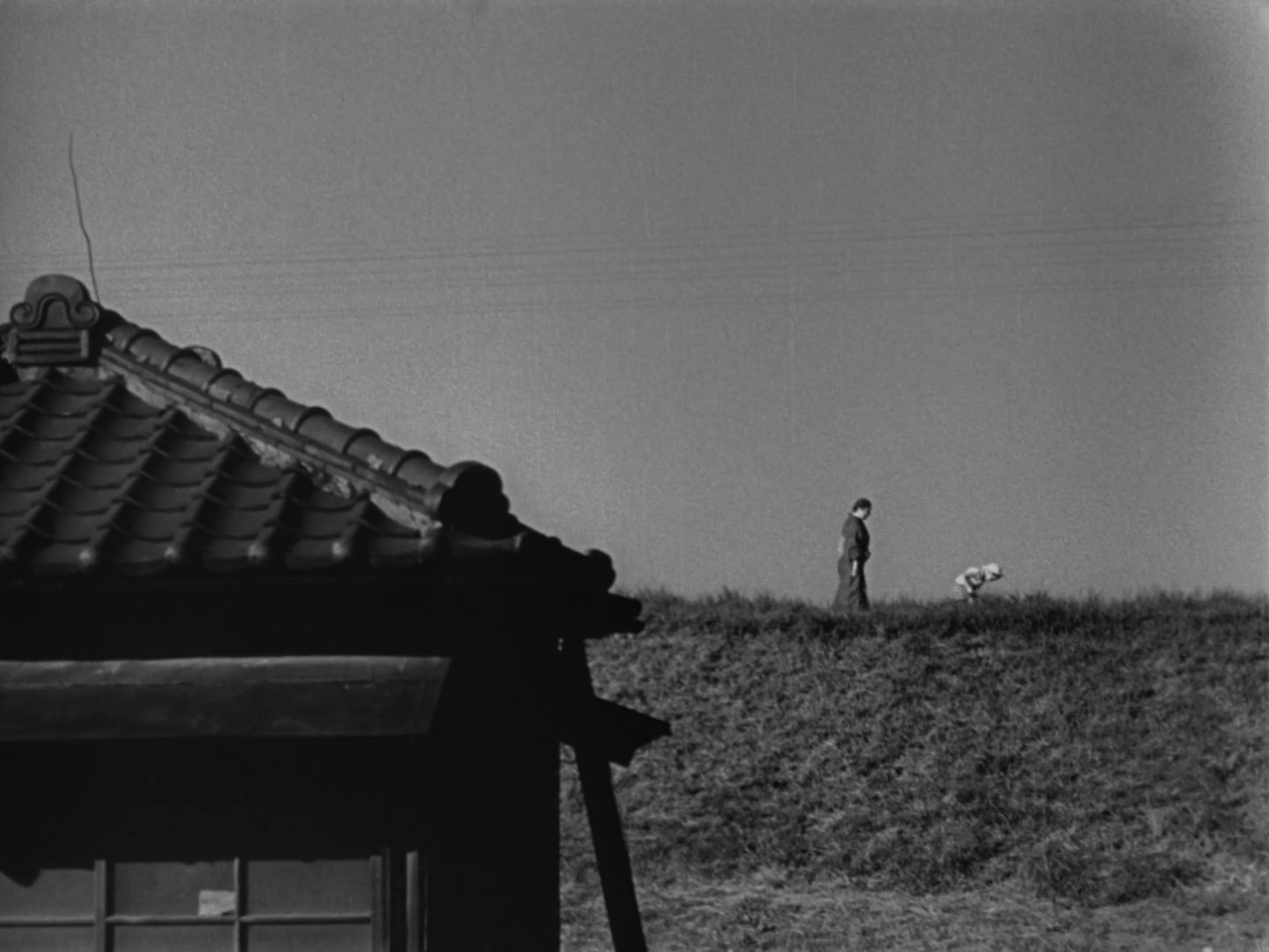
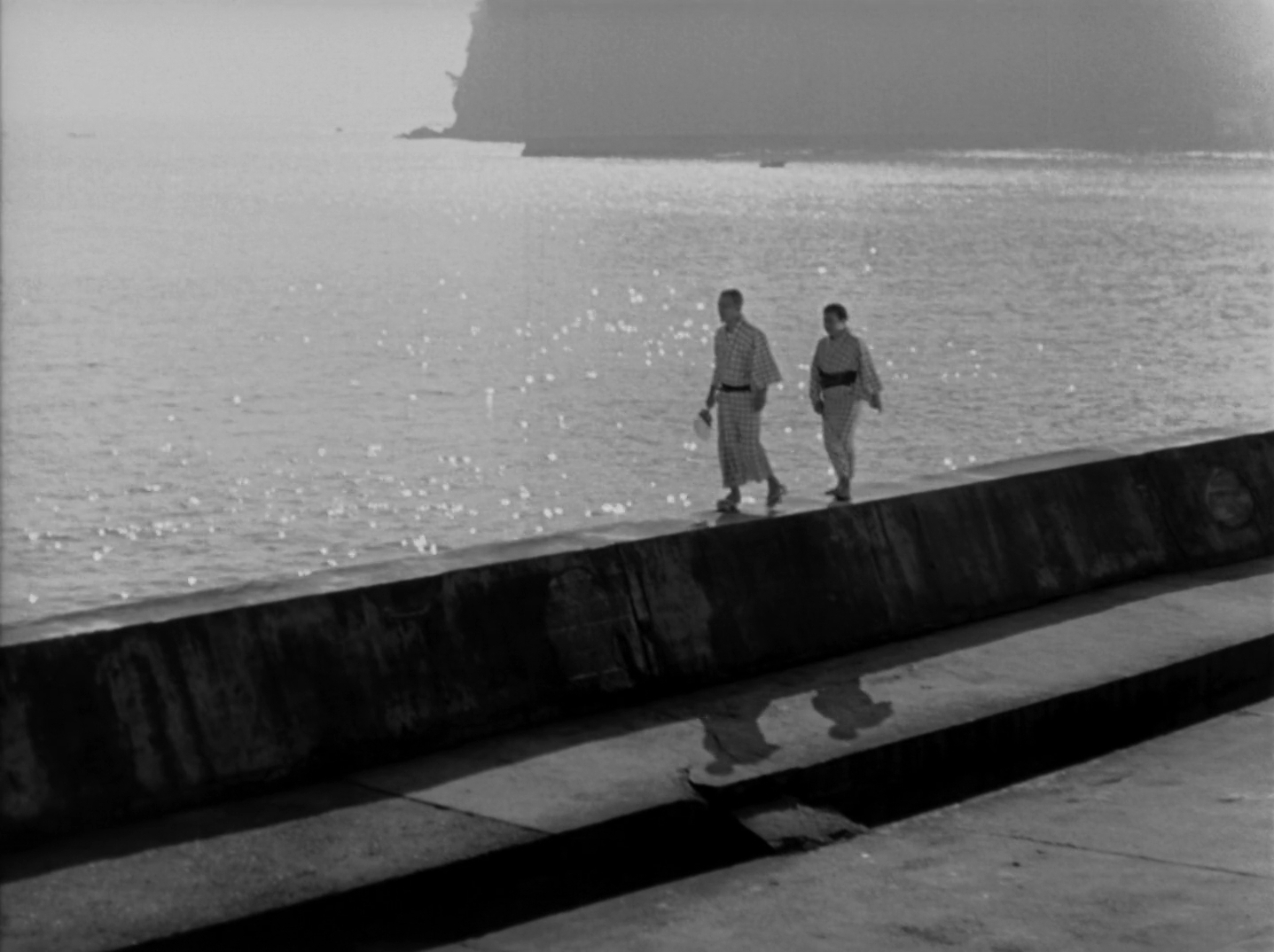
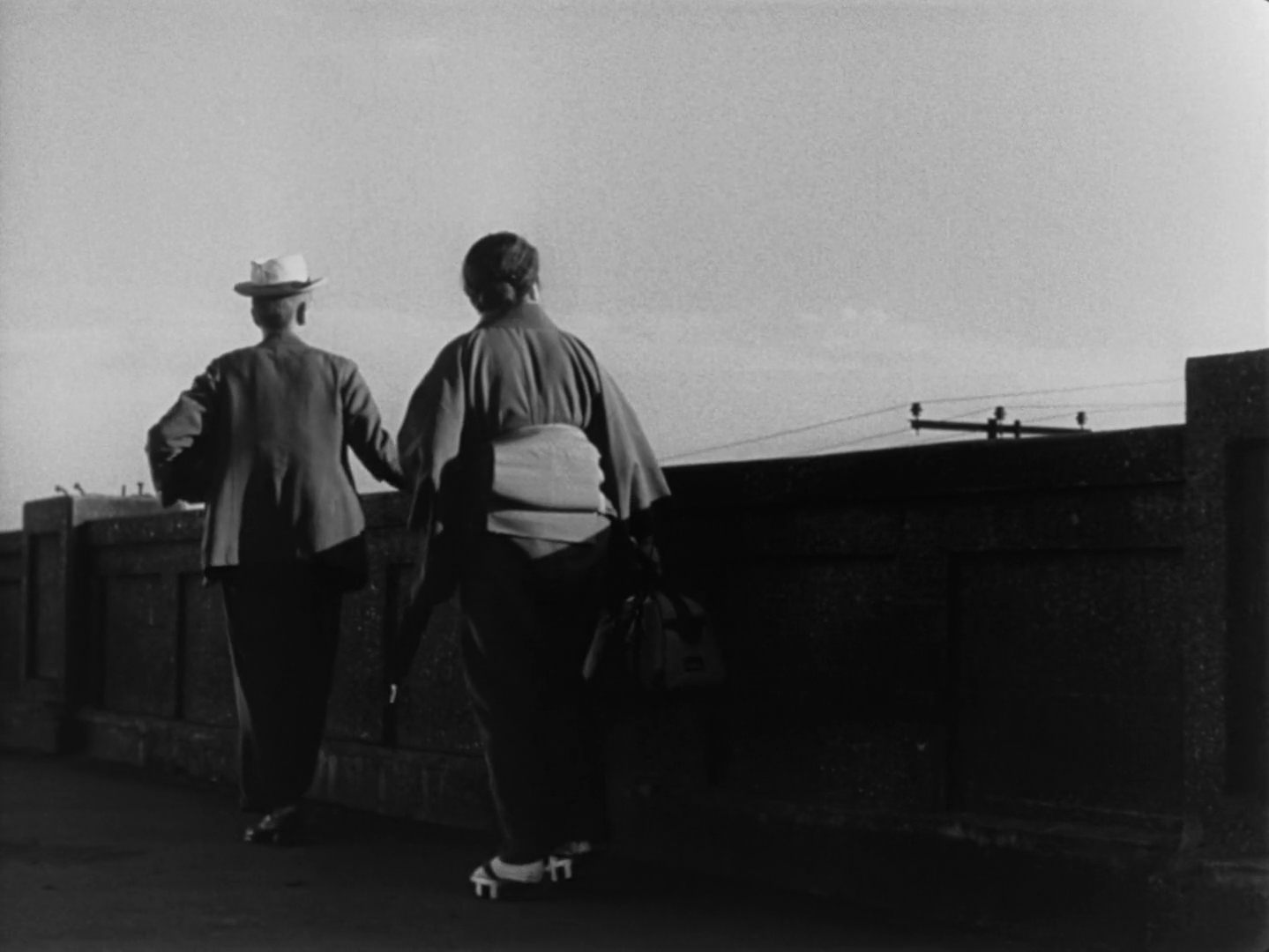
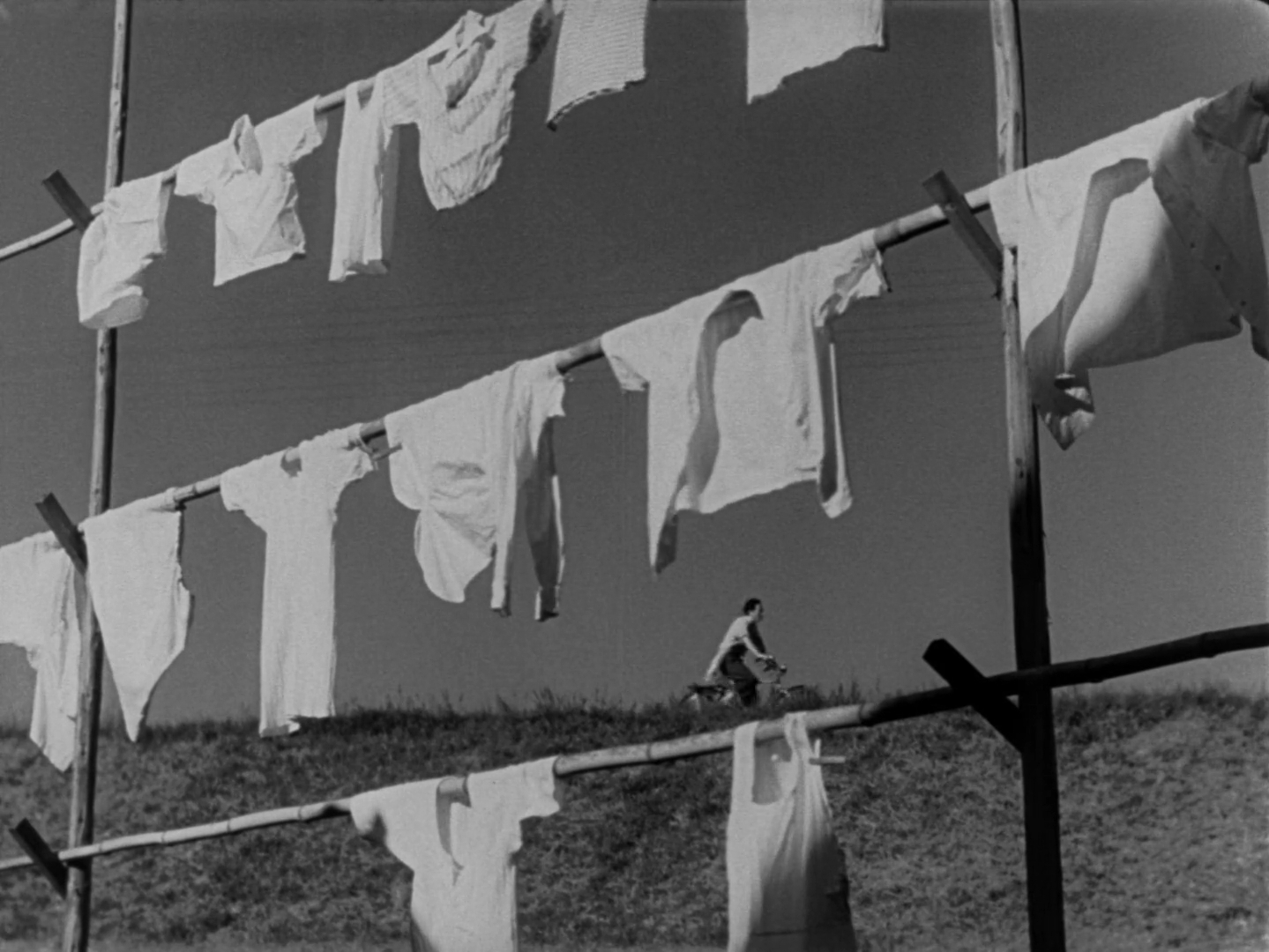
Tomi and Shukichi’s three youngest children personify the same three aspects of time that the opening shots introduced. Shoji, who was killed in the war, belongs to eternity – and for that matter so does his widow Noriko who is played by Setsuko Hara, famously the “eternal virgin” of Japanese film. Kyoko’s job as a schoolteacher connects her with generational change, and Keizo works for the railroad, which is linear time. The two eldest children, Koichi and Shige, form a close pair, but they’re not intimate with their parents or the rest of the family. He works as a doctor, tending to the inside of the body, and she’s a beautician, tending to the outside – he’s too aloof, and she’s too superficial. They’re both incomplete persons, standing apart from the family and from the flow of time that defines humanity.
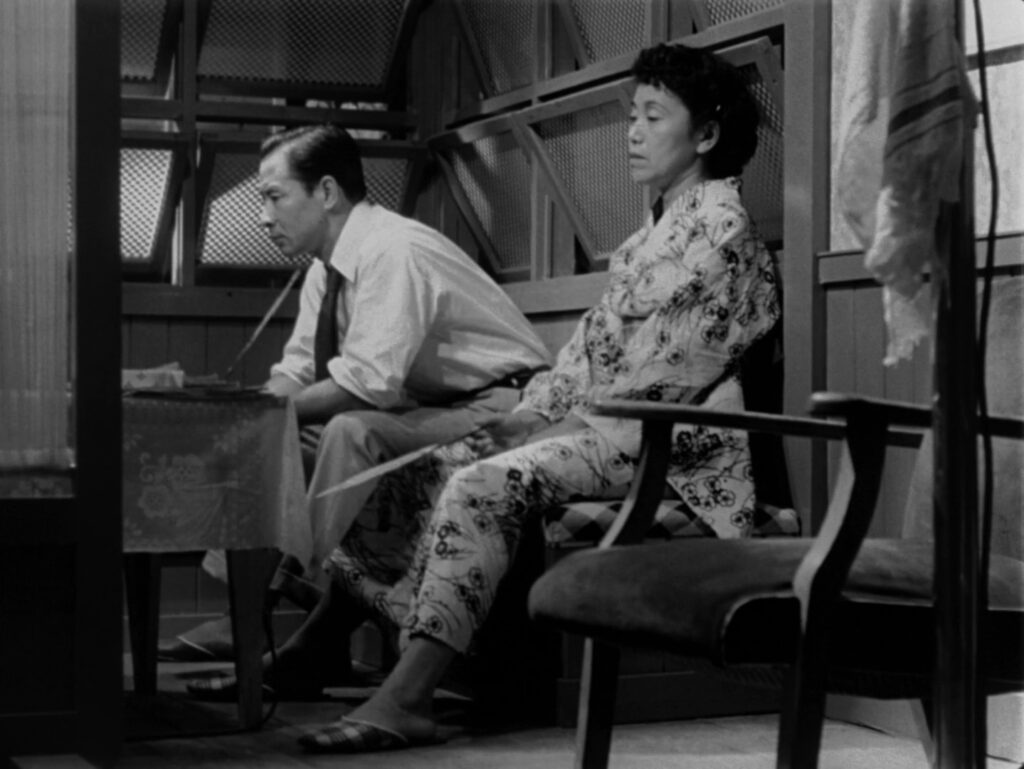
Together, then, the five children plus Noriko represent the various facets of time and character, the elemental building blocks of narrative. In a similar fashion the grandparents represent the two directions of time. In their more consequential statements Tomi speaks mostly of the future (wondering what her grandson will become, anticipating the time when she is gone, encouraging Noriko to get married), and Shukichi talks about the past (telling Fumiko what her husband was like as a child, reminiscing with friends at the bar). The irony is that she has little future left (she’s about to die), while he has a diminished past (he was a bit of a drunkard). Once she dies, however, he begins talking of the future, telling Noriko she ought to marry. His famous line, “If only I had known it would come to this, I would have been nicer to her,” still speaks of the past but expresses a wish that he had thought of the future.
In gratitude for Noriko’s kindness Shukichi gives her Tomi’s watch. In so doing, he gives her what his wife no longer has – time. The full weight of this becomes apparent after Noriko leaves. First we see Kyoko in her classroom, and when she looks at her watch we can guess that a train will soon appear – as it does a moment later below the classroom window. The scene then cuts inside the train, where Noriko opens Tomi’s watch and looks at it. This is the first time in Tokyo Story we have seen anyone riding a train, and along with the literal image of the watch, the forward moving train shows Noriko’s renewed sense of time after living for eight years as if her life were already finished.
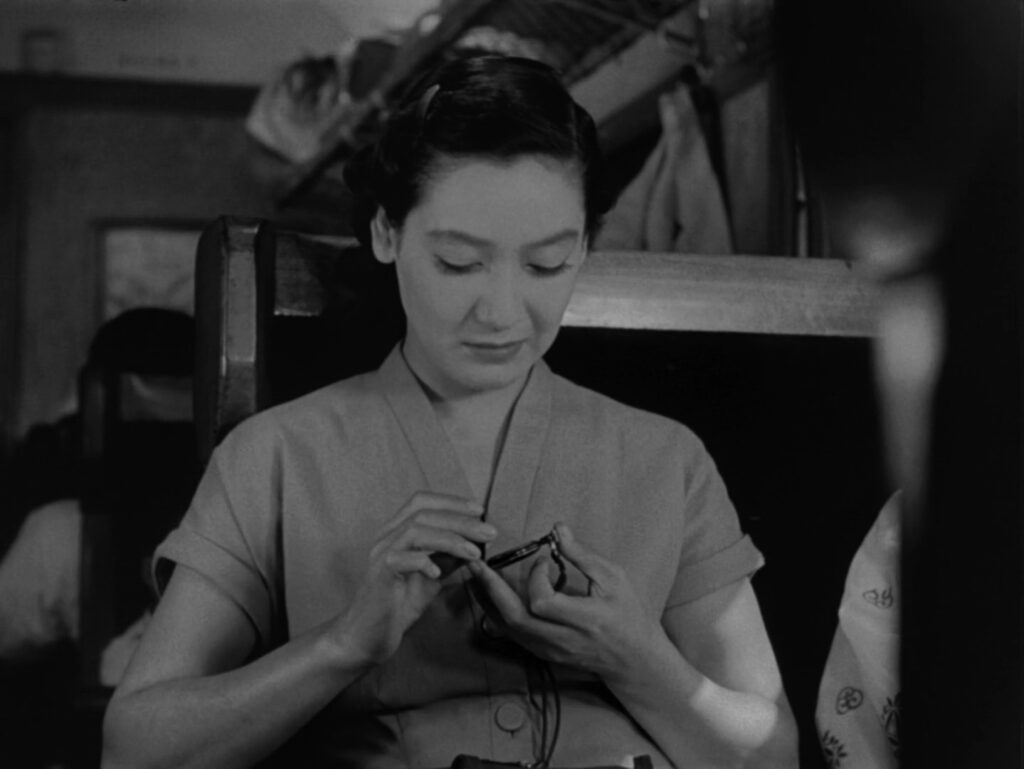
Besides enlisting its story and script (eliding all the dramatic events), editing and cinematography (the pillow shots), and characterization in the process of showing, Tokyo Story also achieves a kind of cinematic miracle through its structure. Its most obvious symmetry is the bracketing effect of the neighbor woman in Onomichi who exchanges polite remarks in the first and last scenes. Less obvious is how a hinge near the middle demarcates the film’s structure. The scene in Ueno Park is opposite to the beginning and ending because instead of being at home, or dependent on their children as they are in the rest of the movie, here they’re utterly homeless. The choice of location stresses this point: Ueno Park was well known as a gathering place for the homeless and displaced after the 1923 earthquake and during World War II. The short scene is itself bracketed by the only two camera movements in Tokyo Story, a left-to-right tracking shot and another right-to-left, together retracing in miniature the route of their round trip from Onomichi to Tokyo and back as charted on a map.
This symmetry is less important for its formal quality than for the hidden shift in direction it delineates. Before Ueno Park, virtually all the dialogue in Tokyo Story has been facts or polite pleasantries: “You didn’t have to come today. We’ll be here for some time.” “Are you still working for the same company?” “Yes.” Afterwards, almost all significant dialogue will consist of feelings and opinions. Shukichi gets drunk with his friends and reveals his disappointment with Koichi. Tomi confesses her sympathy for Noriko and encourages her to remarry. Shige expresses disgust with her father’s drunken behavior. Shukichi admits to his wife that he prefers their children to their grandchildren, but also that Shige has become less nice. Kyoko shares with Noriko her disapproval of her older siblings. This transformation from facts to feelings happens so naturally that it easily passes unnoticed, but the pattern is consistent, and the effect is responsible for much of the unexpected emotional power at the end.
After spending about an hour on facts and another hour on emotions, Tokyo Story is ready at the end to move up to enlightenment. The reason people love this movie so much, the reason it seems so large in spite of its modesty, is that it focuses so clearly on the essentials of life, looking at people inside and outside and looking at time in all its manifestations – past and future, eternal, historical, and generational – with nothing extraneous. What could be more basic, more familiar, or more powerful than the coming and going of family members with all the complex yet universal emotions around that?
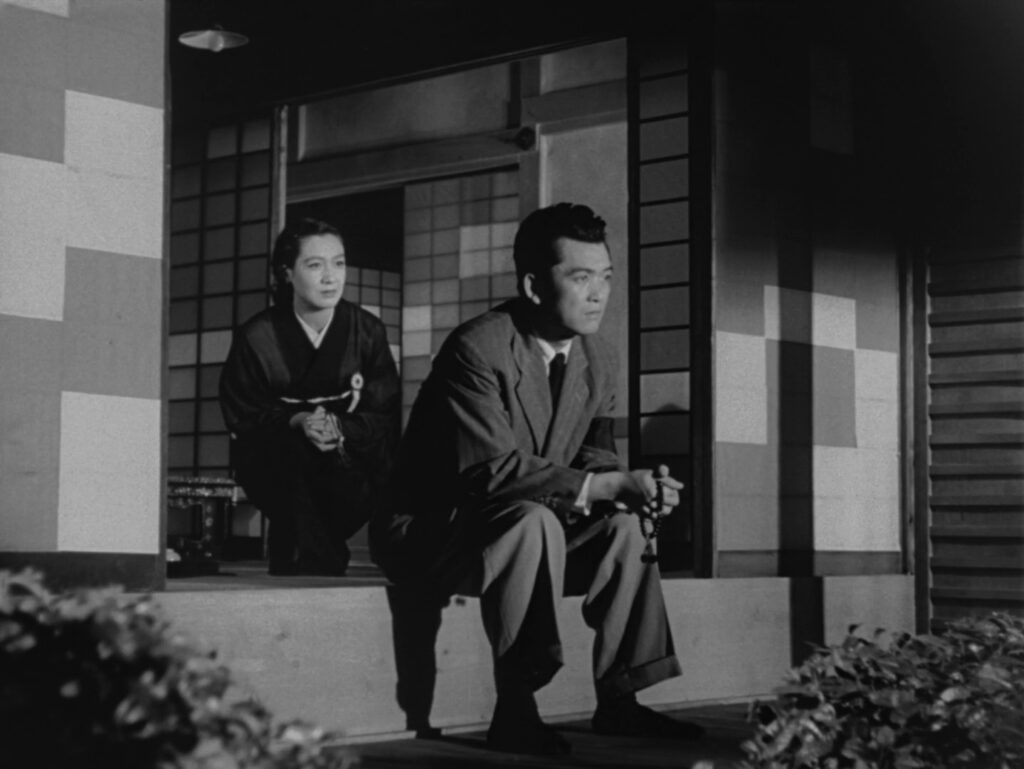
The ending reaches for the ineffable in two crucial lines of dialogue. The first comes when Kyoko vents her irritation at the selfishness of her older siblings, and Noriko tells her with a smile that their behavior is an inevitable part of life, that she herself might become like that in spite of everything. Kyoko seems to sum up the whole story in one line: “Isn’t life disappointing?” Noriko marks her agreement with that eternal smile of serene acceptance, and it seems as if Kyoko grows up in that moment. But this isn’t quite the right note to end the movie. The scene is followed by Kyoko in the schoolroom and Noriko looking at the watch on the train, then the movie returns to Shukichi sitting alone at home. The neighbor from the opening scene walks by again, and their conversation builds to a more fitting summation: “If I had known it would come to this, I would have been kinder to her while she was alive.” His speech hits powerfully because it is so universally true, and because the movie has just spent two and a quarter hours showing us the same thing. As strong as the line is, however, it should be superfluous if the movie has succeeded in its attempt at “showing”. Eight years later, with Ozu’s own mother’s death imminent, he would revisit the same subject in another film, forgoing Tokyo Story‘s depth of emotion but reaching higher in its understanding of life.
CONNECTIONS:
City Lights – Intricately structured film with a highly emotional ending
Such a Pretty Little Beach – Gift of a watch at the end, symbolically giving time from a dying person to someone who needs a better life
Late Spring – Time defined by clocks & eternity, generational change, and tradition vs. modernity
Early Summer – Deliberate demarcation between matter-of-fact speech and emotional dialogue
Ugetsu monogatari – Framed by time and eternity; looking backward and forward in time; story of elemental and universal values; structural significance in the direction of camera movement; made in the same year
The Night of the Hunter – Gift of a watch near the end as a token of the recipient’s time ahead
Pather Panchali – Characters arranged in a matrix of significance with a reversal in the parents’ alignment; emotionally charged scene near the end
Night Train – Characters who stand for different directions of time
Floating Weeds – Boats associated with eternity, trains with linear time
The Cloud-Capped Star – Matrix of characterizations in a large family, with parents defined by their pattern of dialogue
L’avventura – Looks at the disappointing nature of life with wonder; minimization of dramatic content; builds to an ineffable feeling at the end
The End of Summer – Story about parents; two lines near the end restated; Setsuko Hara plays a widow; reach for the ineffable at the end
Time Walks Through the City – Systematic distinction between clock time, eternity, and cyclical time
The Hypothesis of the Stolen Painting – Definition of telling and showing